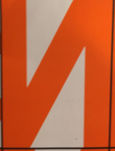Shostakovich
Figure and Ground
If the publication of the Debussy's Preludes in 1910 marks the birth of modern impressionist music, the appearance of the Shostakovich Preludes of 1950 marks its demise. In the first half of this set, I've been happily matching Debussy's pieces with companion images from the period, as if the Preludes were taking part in an exhibition. Where Debussy practically insists that you think impressionistically, finding a pictorial match for a Shostakovich prelude is a near-impossibility. Instead, I've cut up the cover of the Sikorski edition, which thoughtfully is divided into 12 separate squares, one for each Prelude in Book 1.
Here's the cut-up version of that cover. Each square represents a different prelude in the first set (there are 12 in Volume 1):
You'll see that Shostakovich arranges his Preludes & Fugues differently from Bach - where Bach went in chromatic order from C to B, Shostakovich wheels around the circle of fifths, adding a sharp with each new set of major and minor preludes. So A Minor is the relative minor of C Major, with no flats or sharps, and E minor is the relative minor of G major, with one sharp, and so on. It makes the sequence much more of a cycle than Bach's Preludes and Fugues. Shostakovich completes the cycle in Book 2, but I'm only doing Book 1, as I only did Book 1 of the Well-Tempered Klavier, and Book 1 of Debussy's Preludes. To make things slightly more complicated, I've decided to conclude each set of 4 Preludes with the corresponding Fugue (#4, #8, and #12):
 Fugue #4 in E Minor |  Fugue #8 in F# Minor |
|---|---|
 Fugue #12 in G# Minor |
These fugues are next to impossible, and very long, but they will stand for all the others that I'm not playing. The idea is that the Preludes in each set of 4 make a coherent statement, which is then answered by the fourth Fugue. I think it works, but it will be up to you to decide. In any case, these pieces act as the ground to Debussy's figure, the black to Debussy's white. Where Debussy is all parasols and cathedrals, Shostakovich is simplicity and anguish. There are moments of heart-stopping beauty in the Shostakovich Preludes (#1 and #5 particularly), and that beauty can be lost when it is smothered with a wickedly difficult fugue. I've tried to shape the set differently, to bring the 12 pieces of Debussy's first book of Preludes into a new and sharper focus. With the 12 Preludes from Paris and the 12 Preludes from Moscow, that makes a 20th century statement to mirror Bach's first book of the Well-Tempered Clavier, which also has 24 Preludes. Enough math: listen to the music.














